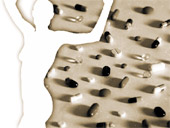 |
Forty years ago, when Marianne Legato had joined the heart surgery unit of New York Presbyterian Hospital, she’d wondered why doctors attending heart attacks in the emergency room had an obvious male bias. Although she was just a rookie in the ER, she would feel that seasoned surgeons — even if they were women — tended to treat female patients who complained of chest pain rather shabbily (stereotyping them as “whining”, “hysterical female” or a “head case”). While male patients complaining of pain in the chest were rushed for intensive care (“Males are usually more stoic about pain than women” was the typical response’), women were sent out with a prescription for a sleeping pill and an antacid.
As an internist at the cardiology department Legato gradually came to realise that the problem lay embedded in medical practice. “The traditional notion of medicine is that women are basically smaller versions of men,” says Legato, a pioneer in an emerging international medical movement called “gender-specific” medicine. “For a woman to be assessed or treated properly she had to be significantly sicker than a man,” writes Legato in the preface of her book Principles of Gender-Specific Medicine, brought on by a decade of research on women’s health problems. The two-volume clinical textbook — set for release on May 25 — is first of a kind which explores how human biology differs between men and women and how those differences affect — or should affect — diagnosis and treatment.
Medical research and intense advocacy spearheaded by Legato is going to explode one of the more pernicious myths of modern medicine: the idea that women and men are medically interchangeable except for their reproductive systems. As Legato says, the days of one-size-fits-all medicine are gone. “We have to show, beyond any shadow of a doubt, with concrete data, that gender-specific medicine actually is good and better for patients than the way we have been doing business.”
The male bias of medicine, pointed out by Legato, has its origin in the early 20th century when all physicians were men — women were considered too modest to hear about many of the topics that would have to be discussed. Things began to change dramatically in Europe and the US after World War I. On the one hand, woman had access to jobs and professions. On the other hand, the discovery of antibiotics had increased physicians’ power considerably. By the 1950s, with the emergence of feminism, women got together to find out about their own physiology. Books like Our Bodies, Our Selves had women share information with other women.
But when women like Legato joined medicine in the Sixties, they found the changes were just on the surface. Two-thirds of all research done on diseases that affect both genders were found to be based exclusively on men. “The rationale was: Why can’t we extrapolate what we learn from men to women without modification? Aren’t women just smaller versions of men?” reminisced Legato in a book called Eve’s Rib: The New Science of Gender-Specific Medicine and How it Can Save Your Life published in 1997. After graduating from the New York University School of Medicine in 1965, when she joined the Presbyterian Hospital’s cardiology unit she’d notice that in many ways, a heart attack is a far more serious event for a woman than it is for man. When a woman has a heart attack, she is twice as likely as a man to die within the first 60 days. In fact, four out of 10 of all women die within the first year of an attack, compared to three out of 10 cases of death in men.
The real reason for such a higher rate of death and other complications may stem from the fact that women heart patients may be sicker than men to begin with, because women or their doctors — or both — have ignored or neglected important warning signs in the earlier stage of the disease. What Legato finds more upsetting is that women are not as assertive when they have signs like pain in the upper abdomen and back, intense nausea or shortness of breath. (Men generally have “crushing, an-elephant-is-standing-on-my-chest pain). “I suspect,” says Legato, “that many of the women heart attack victims have may have too easily accepted their doctor’s assurances that they’d nothing to worry about.”
As Legato went ahead with her research, in an ironic twist, she discovered that medicines which are given specifically to men to prevent heart arrhythmias, can actually cause them in women. Eventually, researchers from other disciplines began to report of medicines that are safe for men but lethal for some women. When Legato exchanged notes with them she came to know of other gaping gender differences in women. She came to know that women came out of anaesthesia quicker than men, many painkillers don’t work for women and some anti-depressants have stronger side-effects on them. The most clinching evidence came from Raymond Woosely, the vice-president of the Arizona Health Sciences Center at the University of Arizona in Tucson.
Woosely had identified four drugs — posicor, seldane, hismanal and propulsid — which clearly had stronger side-effects in women. Eventually, these drugs were withdrawn from the market. Armed with even more clinical evidence Legato founded the Partnership for Women’s Health at Columbia University in the US — the first collaboration between academic medicine and the privae sector — to address and refute the generalised approach of medicine in 1997. The immediate goal of the partnership is to pressure the US National Institute of Health to include a greater number of women in drug trials. To make the campaign even stronger the partnership launched two medical journals called The Journal of Gender-Specific Medicine and Gender and Health. The pressure group for gender- specific medicine is getting stronger as more and more medical schools are creating departments to research on gender-based drugs. The Principles of Gender-Specific Medicine gathers all such bits and pieces of research proving that a patient’s sex is increasingly important in preventing illness, making an accurate diagnosis, and choosing safe and effective treatment of disease.
Legato says women can and should feel empowered now when they visit their doctors. “They should have the confidence to say to their physicians, ‘This may not be the usual to you, it may not have been what you were taught, but for me this medication does XYZ’. We’d like to see it move into the brain of the physician who, when he looks at a patient, says, ‘Am I treating a male or a female?’” she adds.
Not that Legato’s efforts have been spared some scathing criticism. Some medical researchers accuse her of overstating her case for the so-called new branch of medicine. Physicians have hinted that the issue may be more of a creation of political lobbyists than hard science. Saly Satel, a psychiatrist at the Yale School of Medicine and a columnist, argues that neglect of women in medicine has been blown out of proportion by radical feminists.
Legato thinks such criticism will be robustly taken care of by hard data presented in Principles. Raymond Woosely is perhaps even more vociferous. “The big picture is that we believe that there’s a major benefit to medicine and society by understanding natural differences between men and women,” he wrote in rebutting critiques of gender-based medicine recently in The Scientist. “It’s not just being politically correct; it’s good business, good health and good science.”
The real surprise is not that there are these differences between the sexes, but that they have only come to light so recently. Even then, the world has been slow to follow up, suspecting it expensive to implement political correctness, rather than sound science. Legato hopes her Principles will get rid of male bias in medicine so that no woman suffering from a heart attack is sent out of an emergency room with a prescription for a sedative or an antacid.
Different Strokes
 |
| Marianne Legato |
• PAIN: Some pain medications (known as kappa-opiates) are far more effective in relieving pain in women than in men.
• ANAESTHESIA: Women tend to wake up from anaesthesia more quickly than men.
• DRUG REACTIONS: Even common drugs like anti-allergens and antibiotics cause different reactions and side-effects in women and men (for instance, ibuprofen is an effective pain-killer for men, but alsoteron relieves abdominal discomfort in women and not men).
• ALCOHOL: Women lack an enzyme in the stomach that breaks alcohol down, so it goes straight into their bloodstream. Men start breaking it down the instant it hits the stomach.
• DRUG ABSORPTION: Women’s stomachs empty more slowly than men’s, which affects how quickly drugs are absorbed. They have more body fat in their total body make-up which can affect the way fat-soluble drugs interact with their bodies.
• RISKS FOR WOMEN: They are five times as likely as men to get migraines and osteoporosis and much more likely to get diseases like lupus, rheumatoid arthritis and scleroderma.
• SUPPLEMENTS: The need for vitamins and minerals varies by gender, too. In general, adults need 1,000 milligrams a day of calcium, but postmenopausal women need 1,500 a day, unless they’re taking estrogen. Men rarely need iron supplements, but menstruating women may. Women of childbearing age may also need 400 micrograms a day of folic acid.










